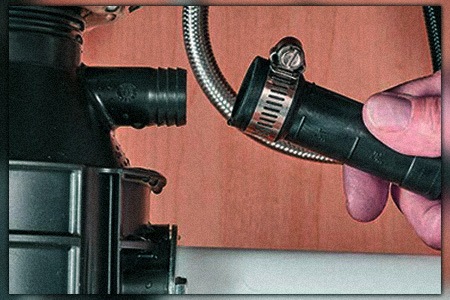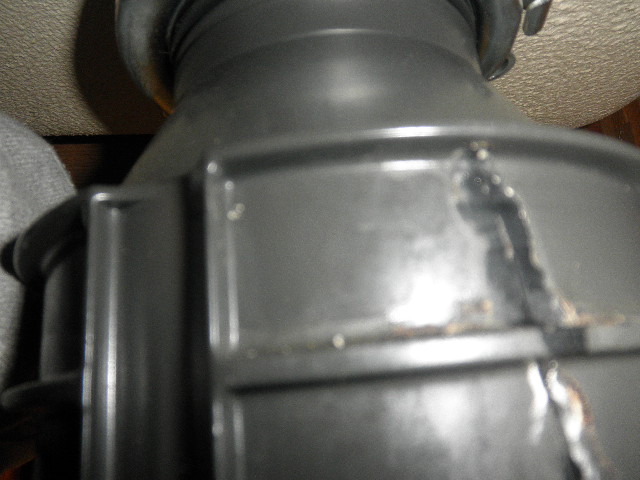Easy-to-Follow Techniques for Repairing a Leaky Garbage Disposal
Easy-to-Follow Techniques for Repairing a Leaky Garbage Disposal
Blog Article
Were you trying to find related information on Why Is ?

Waste disposal unit are crucial cooking area devices that aid in disposing of food waste efficiently. Nonetheless, a dripping garbage disposal can be an irritating and unpleasant issue to handle. Luckily, several leakages can be repaired quickly with a few straightforward actions. In this article, we will certainly review exactly how to repair a leaking waste disposal unit efficiently.
Intro
Waste disposal unit are installed under kitchen area sinks and are made to shred food waste right into smaller pieces, allowing it to travel through the pipes system quickly. While these gadgets are typically trustworthy, leakages can occur gradually as a result of wear and tear, loosened connections, or damages to the unit.
Common Reasons For Leaks in Waste Disposals
Worn Seals and Gaskets
Seals and gaskets play an important role in stopping water from leaking out of the waste disposal unit. With time, these elements can wear away, causing leakages around the disposal unit.
Loose Connections
The connections between the garbage disposal and the pipes system can come to be loose gradually, triggering water to leakage out during procedure.
Fractures or Holes in the Disposal Unit
Physical damages to the waste disposal unit, such as cracks or openings in the housing, can additionally lead to leaks.
Determining the Source of the Leakage
Prior to attempting to deal with a dripping garbage disposal, it is vital to recognize the source of the leakage. This can normally be done with visual inspection or by carrying out basic examinations.
Visual Evaluation
Check the garbage disposal unit thoroughly for any kind of indicators of water leak. Pay attention to locations around seals, gaskets, and connection points.
Testing for Leaks
One way to evaluate for leaks is by running water via the disposal unit and looking for any kind of noticeable indications of leak.
Tools and Materials Needed for Dealing With a Leaking Garbage Disposal
Prior to beginning the repair service procedure, collect the needed tools and materials, consisting of a screwdriver, adjustable wrench, plumber's putty, substitute seals or gaskets, and epoxy or patching material for fixing cracks or holes.
Step-by-Step Guide to Taking Care Of a Leaking Garbage Disposal
Turn Off the Power
Before trying any type of repair services, guarantee that the power to the garbage disposal device is switched off to stop the danger of electrical shock.
Situate the Leakage
Determine the exact area of the leak and figure out the cause.
Tighten Links
Use a wrench to tighten any kind of loose links in between the disposal device and the pipes system.
Replace Seals or Gaskets
If the leakage is because of used seals or gaskets, eliminate the old elements and change them with brand-new ones.
Patching Cracks or Holes
For cracks or openings in the disposal system, usage epoxy or an ideal patching product to secure the broken location.
Examining the Waste Disposal Unit After Repair
When the repair service is full, evaluate the waste disposal unit by running water with it to make sure that the leakage has been resolved.
Preventive Maintenance Tips to Stay Clear Of Future Leakages
To stop future leaks, it is essential to do regular upkeep on your waste disposal unit. This includes keeping it clean, avoiding placing non-food products or hard objects down the disposal, and regularly checking for leakages or other problems.
Conclusion
In conclusion, taking care of a leaking waste disposal unit is a reasonably uncomplicated process that can be finished with standard devices and products. By complying with the actions described in this write-up and exercising preventive maintenance, you can keep your garbage disposal in good working condition and stay clear of expensive repair work in the future.
HERE’S HOW TO FIX YOUR GARBAGE DISPOSAL
WHAT TO DO IF SOMETHING IS STUCK IN YOUR GARBAGE DISPOSAL
If the impeller won’t turn, there’s probably something stuck in the disposal. It could be a steak bone or peach pit, although plumbers report pulling all sorts of inappropriate objects out of disposals, such as bottle caps or aluminum foil. Make sure power to the disposal is off, and look inside to see if you can see the source of the jam.
Never stick your fingers in a disposal. Pull out anything you see with tongs or pliers.
If the disposal still won’t work, it may be time to call a plumber or consider buying a new disposal. GEM Plumbing & Heating is here for all of your garbage disposal needs.
WHAT TO DO IF YOUR GARBAGE DISPOSAL DRAIN IS CLOGGED
Take everything out from underneath your sink and put a bucket or other container under your disposal to catch any water that drains out. Disconnect your disposal from the power supply. If it’s plugged into a wall outlet, unplug it. If it’s hardwired into an electrical box, go to the electrical panel and turn off the breaker for the disposal. Pour ¼ cup of baking soda into the drain, followed by ½ cup of white vinegar. Give the solution a few minutes to fizz and do its work. Look into the disposal with a flashlight to see if you can see an object that might be causing the clog. If you see it, remove it using tongs or pliers. MORE TIPS ON DEALING WITH A CLOGGED GARBAGE DISPOSAL
Never use drain cleaner in a garbage disposal. It can damage the plastic parts inside the disposal. You can also be splashed with the caustic liquid while working to clear the clog. Beware! Never stick your fingers into a garbage disposal. Trust us — not a good idea. In many instances, your dishwasher drains through your garbage disposal. This allows the disposal to grind any large food particles that may be drained out of your dishwasher. There are some jurisdictions, however, where the plumbing code prohibits such a connection. WHAT TO DO WHEN YOUR DISHWASHER DRAINS THROUGH THE DISPOSAL
Run some water in the sink so your plunger has at least a ½-inch of water to create a seal and plunge vigorously up and down several times. You may need to repeat this several times. Run hot water down the drain to clear any residue that remains.

Do you enjoy more info about Why Is ? Put a remark down the page. We would be glad to know your feelings about this page. We are looking forward that you visit us again in the near future. Sharing is nice. You never know, you may just be helping someone out. Thank you for taking the time to read it.
View More Report this page